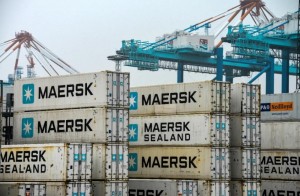Unprecedented Challenges Gripping Mexico’s Trade Environment in 2023: Navigating the Storm
Unprecedented Challenges Gripping Mexico’s Trade Environment in 2023: Navigating the Storm
Dear followers,
In 2023, Mexico’s ports and customs processes are facing an array of unprecedented challenges, significantly impacting import and export operations. Here’s a breakdown of the diverse factors influencing Mexico’s trade environment:
- Political Turmoil: With upcoming presidential elections, political instability has engulfed Mexican states, affecting over 20,000 federal and local positions, including customs and tax authorities. This uncertainty hampers government operations and policy formulation.
- Customs Leadership Changes: Recent upheavals in the top echelons of the customs authority triggered rule changes and realignment of clearance factions, directly impacting the clearance process and speed of imported containers.
- Container Backlog: Since the beginning of the year, political instability and customs issues have led to a backlog of over 1,000 containers, causing uncertainty in delivery times and accruing significant demurrage and container detention fees.
- Surge in Shipping Volume: Mexico experienced a threefold increase in container shipments within a short period, severely impacting trailer supply at Lazaro Cardenas Port. A shortage of at least 50,000 truck drivers ensued due to low income, long working hours, high risks, and demanding labor conditions.
- Railway Disruptions: Truck driver strikes at Mexico City’s railway port caused congestion, disrupting the planned transport of containers. Some shipping companies halted new orders for China to Mexico City rail containers, further destabilizing the supply chain.
- Port Worker Strikes: Frequent strikes by port workers since October over contract, compensation, and wage issues caused indefinite delays in container operations, posing significant challenges to predictability and delivery times.
- Tax Inspections: The Tax Administration Service (SAT) and police set up inspection stations, examining affected containers. Detained containers incur high costs, complicating the clearance process and increasing its complexity and cost.
- Security Concerns: Cargo within Mexico is susceptible to theft and robbery, adding an extra layer of safety concerns.
- Limited Customs Headcounts and Increased Risk of Defaults: Rising volumes and slow clearance at Manzanillo Port, which usually takes 5-7 working days, may now take 1-2 months during peak times.
- Increased Default Risk: Limited customs manpower and slow clearance processes contribute to a higher risk of defaults.
- NOM Certification: Beyond standard clearance documents, electronic and electrical products require NOM certification from Mexico’s Ministry of Economy, adding complexity to the clearance process.
- Implementation of Carta Porte 3.0: Since November 25, 2023, the Tax Administration Service implemented the new version of Carta Porte, aiming to enhance freight transparency and combat irregular trade and smuggling.
In this complex and unpredictable environment, cross-border sellers and logistics providers must take appropriate measures to safeguard goods, mitigate risks, and optimize supply chain management.
When the product is 100% produced, before or after the product is packaged, we will inspect the appearance, handwork, function, safety, and check quality required by the customer in our full inspection warehouse according to customer requirements. Strictly distinguish between good and bad products, and report the inspection results to customers in a timely manner. After the inspection is completed, the good products are packed in boxes and sealed with special tape. The defective products will be returned to the factory with the defective product details. OBD will ensure that each product shipped meets your quality requirements








